Showing Spotlights 417 - 424 of 2779 in category All (newest first):
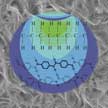 Being able to replicate the extraordinary mechanical properties of nacre and other biological structures could lead to synthetic materials that possess the exceptional mechanical properties required to perform under extreme conditions. In this context, ultrahigh molecular weight polyethylene is a high-performance specialty polymer with a unique set of properties and applications. It shows remarkable strength-to-weight ratio and an excellent energy absorption ability, making it a promising material for protective applications such as body armor, biomedical implants or heat-resistant coatings.
Being able to replicate the extraordinary mechanical properties of nacre and other biological structures could lead to synthetic materials that possess the exceptional mechanical properties required to perform under extreme conditions. In this context, ultrahigh molecular weight polyethylene is a high-performance specialty polymer with a unique set of properties and applications. It shows remarkable strength-to-weight ratio and an excellent energy absorption ability, making it a promising material for protective applications such as body armor, biomedical implants or heat-resistant coatings.
Oct 22nd, 2020
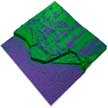 Kelvin probe force microscopy (KPFM), also known as surface potential microscopy, is one member of a suite of electrical characterization methods available in atomic force microscopes. It maps the contact potential difference between a surface and the cantilever, containing information about the surface potential and work function. KPFM is a surface-sensitive method that probes at and near the surface only. It is often used as a qualitative technique to obtain contrast based on the surface potential.
Kelvin probe force microscopy (KPFM), also known as surface potential microscopy, is one member of a suite of electrical characterization methods available in atomic force microscopes. It maps the contact potential difference between a surface and the cantilever, containing information about the surface potential and work function. KPFM is a surface-sensitive method that probes at and near the surface only. It is often used as a qualitative technique to obtain contrast based on the surface potential.
Oct 21st, 2020
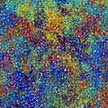 Researchers have recently demonstrated that high-intensity focused ultrasound (HIFU) is a promising, non-invasive stimulus with multiple superior and unique capabilities to induce localized heating and achieve temporal and spatial thermal effects in polymers. The team proposes a new manner of stimulating stimuli-responsive polymers. These polymers demonstrate promise for controlled drug delivery, sensing and biosensing, smart coatings, soft robotics, and flexible electronics among others.
Researchers have recently demonstrated that high-intensity focused ultrasound (HIFU) is a promising, non-invasive stimulus with multiple superior and unique capabilities to induce localized heating and achieve temporal and spatial thermal effects in polymers. The team proposes a new manner of stimulating stimuli-responsive polymers. These polymers demonstrate promise for controlled drug delivery, sensing and biosensing, smart coatings, soft robotics, and flexible electronics among others.
Oct 20th, 2020
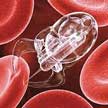 The ability to communicate new advances in science and technology has never been more important, and in that regard innovations with nanotechnology are growing more rapidly than ever with benefits to both society and the economy. However, for many consumers and the general public, the very idea of nanotechnology is both a wonder and an enigma. But how do we keep our society engaged with new nanotechnology at a time when everyone is more discerning? Well, one approach is to use storytelling.
The ability to communicate new advances in science and technology has never been more important, and in that regard innovations with nanotechnology are growing more rapidly than ever with benefits to both society and the economy. However, for many consumers and the general public, the very idea of nanotechnology is both a wonder and an enigma. But how do we keep our society engaged with new nanotechnology at a time when everyone is more discerning? Well, one approach is to use storytelling.
Oct 15th, 2020
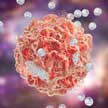 The use of graphene-based materials in pharmaceutical nanotechnology has recently received more attention due to their unique chemical structure and physicochemical properties - including an ultra-high surface area, optical, thermal and electrical conductivities, and a good biocompatibility. They can also load large amounts of drug molecules on both sides of the single atom layer sheet. The next generation of cancer nanotheranostics employing graphene-based nanomaterials could address the many challenges associated with traditional chemotherapeutic agents, such as the issues surrounding poor solubility, harmful side effects, non-specific drug distribution, and multi-drug resistance.
The use of graphene-based materials in pharmaceutical nanotechnology has recently received more attention due to their unique chemical structure and physicochemical properties - including an ultra-high surface area, optical, thermal and electrical conductivities, and a good biocompatibility. They can also load large amounts of drug molecules on both sides of the single atom layer sheet. The next generation of cancer nanotheranostics employing graphene-based nanomaterials could address the many challenges associated with traditional chemotherapeutic agents, such as the issues surrounding poor solubility, harmful side effects, non-specific drug distribution, and multi-drug resistance.
Oct 9th, 2020
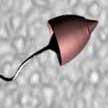 Researchers have developed a hybrid sperm micromotor, which can carry a payload and efficiently and controllably swim against flowing blood. Sperm-based micromotors hold several advantages, in particular their powerful propulsion generated by the beating of the sperm flagella. Sperm are also able to swim for several days with a drag force up to 100 pN. The most important feature of sperm micromotors to operate in the bloodstream is their ability to swim against flow as well as close to boundaries, where the blood velocity is lower than the average velocity, due to shear stress.
Researchers have developed a hybrid sperm micromotor, which can carry a payload and efficiently and controllably swim against flowing blood. Sperm-based micromotors hold several advantages, in particular their powerful propulsion generated by the beating of the sperm flagella. Sperm are also able to swim for several days with a drag force up to 100 pN. The most important feature of sperm micromotors to operate in the bloodstream is their ability to swim against flow as well as close to boundaries, where the blood velocity is lower than the average velocity, due to shear stress.
Oct 8th, 2020
 Biology serves as an important proof-of-principle, and design challenge, for artificial intelligence and shape changing robots. Numerous organisms successfully exploit shape change as a mechanism for adaptation and survival. However, for robotics designers one fundamental question to start with is that it is unclear when and how robots should change their shape. A recent progress review provides an overview of the literature related to robots that change shape to enhance and expand their functionality.
Biology serves as an important proof-of-principle, and design challenge, for artificial intelligence and shape changing robots. Numerous organisms successfully exploit shape change as a mechanism for adaptation and survival. However, for robotics designers one fundamental question to start with is that it is unclear when and how robots should change their shape. A recent progress review provides an overview of the literature related to robots that change shape to enhance and expand their functionality.
Oct 6th, 2020
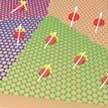 Researchers demonstrate that single-grain growth of graphene crystals can be achieved over a large, macroscale, area. Specifically, the team shows that graphene flakes, nucleated over a polycrystalline graphene film, synchronize during growth so as to ultimately yield a common crystal orientation at the macroscale. The phenomenon of self-alignment of graphene grains during their growth, which the team discovered experimentally, has never been observed before - and at this time the scientists don't have a good model for the underlying physics which leads to this effect.
Researchers demonstrate that single-grain growth of graphene crystals can be achieved over a large, macroscale, area. Specifically, the team shows that graphene flakes, nucleated over a polycrystalline graphene film, synchronize during growth so as to ultimately yield a common crystal orientation at the macroscale. The phenomenon of self-alignment of graphene grains during their growth, which the team discovered experimentally, has never been observed before - and at this time the scientists don't have a good model for the underlying physics which leads to this effect.
Sep 30th, 2020
 Being able to replicate the extraordinary mechanical properties of nacre and other biological structures could lead to synthetic materials that possess the exceptional mechanical properties required to perform under extreme conditions. In this context, ultrahigh molecular weight polyethylene is a high-performance specialty polymer with a unique set of properties and applications. It shows remarkable strength-to-weight ratio and an excellent energy absorption ability, making it a promising material for protective applications such as body armor, biomedical implants or heat-resistant coatings.
Being able to replicate the extraordinary mechanical properties of nacre and other biological structures could lead to synthetic materials that possess the exceptional mechanical properties required to perform under extreme conditions. In this context, ultrahigh molecular weight polyethylene is a high-performance specialty polymer with a unique set of properties and applications. It shows remarkable strength-to-weight ratio and an excellent energy absorption ability, making it a promising material for protective applications such as body armor, biomedical implants or heat-resistant coatings.
 Subscribe to our Nanotechnology Spotlight feed
Subscribe to our Nanotechnology Spotlight feed





